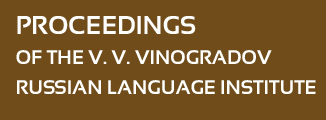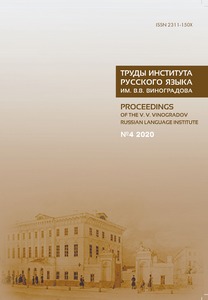TYPES OF INFORMATION AND ITS PRESENTATION IN THE SCHOOL EXPLANATORY DICTIONARY OF THE RUSSIAN LANGUAGE
Abstract:
The article describes the underlying principles of two new explanatory dictionaries for schools: The Explanatory Dictionary of the Russian Language. Grades 5–9 (Moscow, Gramota, 2024) and The Explanatory Dictionary of the Russian Language. Grades 10–11 (Moscow, Gramota, in print) compiled by O. V. Antonova, A. V. Zanadvorova, E. G. Zhidkova, E. V. Kakorina, and E. A. Nikishina (scientifi c editor — L. L. Shestakova).
The article thoroughly examines the lexicographic decisions made by the authors in order to make grammatical information more accessible for the students while broadening their knowledge and helping to organize information in specifi c subject areas (via reference tables), and to promote their overall lexicographic literacy. For instance, the detailed preface to the dictionary introduces students to the system of stylistic labels and to the structure of dictionary entries. It also emphasizes importance of incorporating new words into the dictionary — those that are already actively used by students but have not yet been recorded in normative explanatory dictionaries.
Major emphasis is made on presentation of orthoepic information in the dictionary. The criteria for selecting appropriate variants among confl icting recommendations are spelled out and motivation for recording all acceptable normative variants is justified by the fact that the dictionary serves not only as a reference source but also as a validation tool for standardized exams.
The article also analyzes methods of presenting encyclopedic information and the principles for selecting illustrative material for the dictionary.


